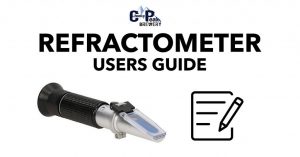Precise fermentation temperature control is an absolute non-negotiable if you want to produce consistent homebrew beer. For optimal brewing results, your fermenting beer needs to be kept within a very specific temperature range.
If you haven’t already thought about precisely controlling your fermentation temperatures, I can confidently say that it will be the biggest improvement on the overall quality of your beer.
The best part…
It can be extremely simple and cost effective to achieve.
In order to accurately control your fermentation temperatures, you must have the ability to apply direct cooling to your fermentation vessel. It is not enough to leave your fermenter within a stable climate-controlled room. Although this solution is better than nothing, precise temperature control requires a little extra attention.
STEPS FOR PRECISE TEMPERATURE CONTROL
STEP 1: PURCHASE A DEDICATED FERMENTATION FRIDGE OR CHEST FREEZER
If you’re lucky, you may even have a second-hand fridge or chest freezer lying around your home. Classifieds or buy/sell sites are another place to source cheap second-hand fridges.
This fridge or chest freezer will become your dedicated fermentation space.
TIP: It’s important to first make sure your fermenter fits comfortably inside before purchasing!
STEP 2: PURCHASE AN EXTERNAL DUAL STAGE TEMPERATURE CONTROL UNIT + HEAT PAD
This is where all the magic happens.
1. Plug your fridge and heat pad into the external temperature unit.
2. Secure the temperature probe of the control unit onto your fermentation vessel.
3. Turn on your temperature control unit and set the specific temperature required for your fermentation.
With the all this in place, the fridge and heat pad will kick in and out whenever your fermentation temperature falls outside of your set temperature.
PRECISE TEMPERATURE CONTROL ACHIEVED!
IMPORTANT: When securing your temperature probe onto your fermenter, make sure it secured firmly and insulated to ensure it is reading the internal fermentation temperature and not the external temperature surrounding your fermenter.











